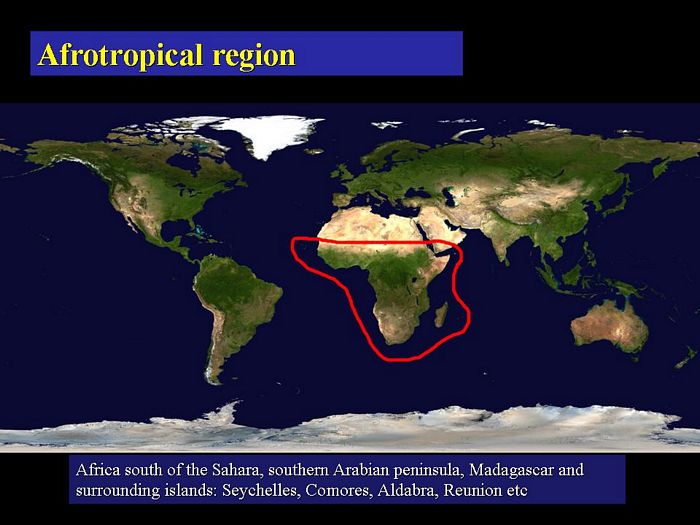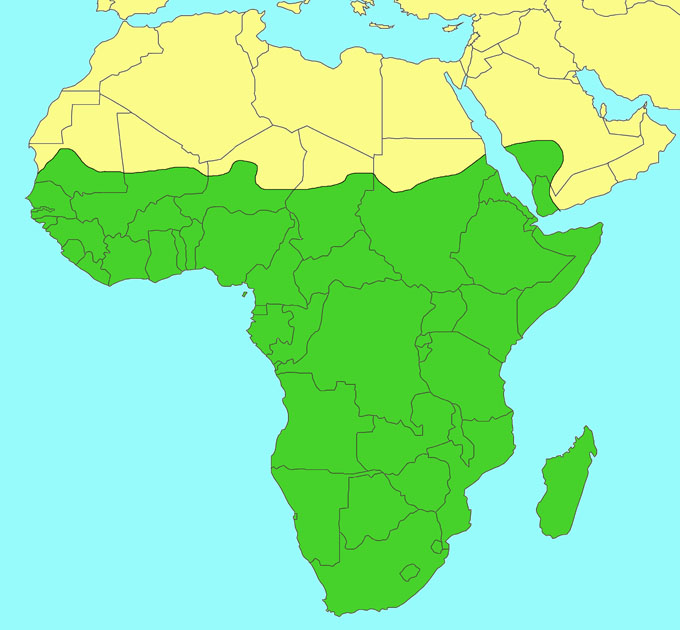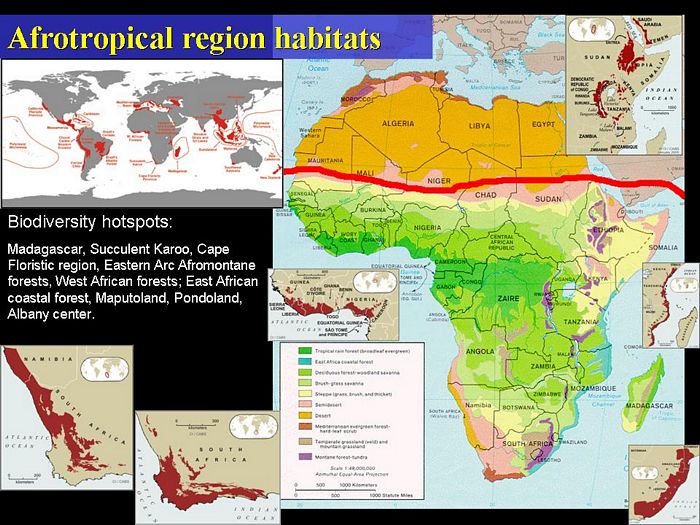
Delimitation of the Afrotropical region
as defined for the Afrotropical Hymenoptera Initiative
(van Noort et al. 2015):
 |
The Afrotropical region is a
relatively uncontroversial concept conforming to the old Ethiopian
region of Sclater and Wallace from the earliest days of
zoogeography, with the name changed as of Crosskey and White (1977).
As in all the authoritative versions of delimitations, Madagascar
and the islands of the western Indian Ocean
are included, as is the southern part of the
Arabian Peninsula, the South Atlantic islands of
Ascension, St. Helena, Tristan da Cunha and Gough, as well as the
Cape Verde Islands and the Gulf of Guinea islands
(Darlington 1957, Crosskey
1980). Crosskey and White (1977) defined the northern limit of the
region by the 10 inch (254 mm) precipitation isohyet. With climate
change and aridification this boundary is constantly in a state of
flux. For the purposes of the Afrotropical Hymenoptera Initiative we
use the boundary between the arid and hyper-arid climatological
zones as defined by the World Meterological Organization and United
Nations Environment Program derived from mean monthly precipitation
and potential evapotranspiration surfaces (Desanker and Magadza
2001; van Noort et al. 2015). This corresponds to the northern edge
of the Sahel region bordering with the southern limits of the Sahara
desert, a boundary which is usually demarcated by the 150 mm isohyet
(White 1983, Fensholt et al. 2013). White (1983) and Linder (2012)
further subdivide the sub-Saharan region into cohesive
biogeographical subentities based on plant and vertebrate data.
Patterns of invertebrate distributions would be expected to
correlate with the environmental partitioning of the region (van
Noort et al. 2015).
|

|
References |
van Noort, S, Buffington ML & Forshage, M. 2015.
Afrotropical Cynipoidea (Hymenoptera). ZooKeys 493: 1-176. doi: 10.3897/zookeys.493.6353
Van Noort, S. Eardley, C. & Robertson, H. 2010.
Hymenoptera of the World: diversity assessment and
identification guide proposal. Proceedings of the 7th
International Congress of Hymenopterists, Koszeg, Hungary, 20-26
June 2010. |
Credits
|
Illustrations
© Simon van Noort (Iziko Museums of South Africa). |
|